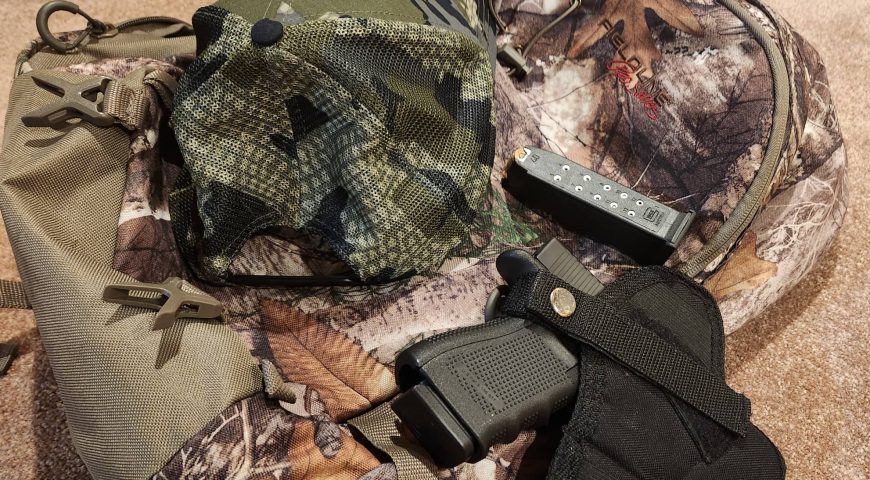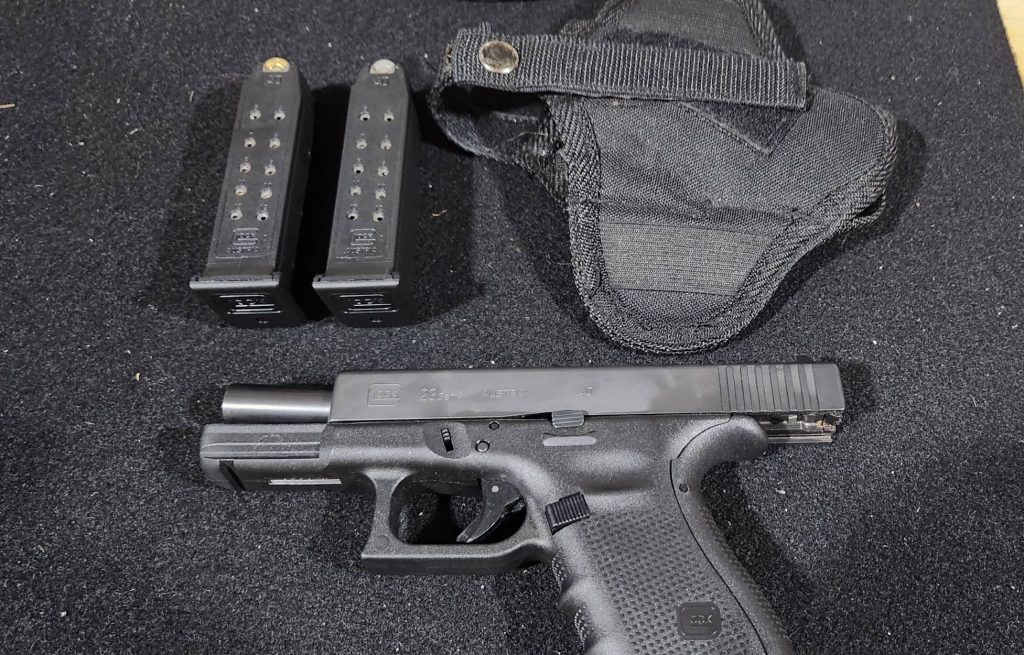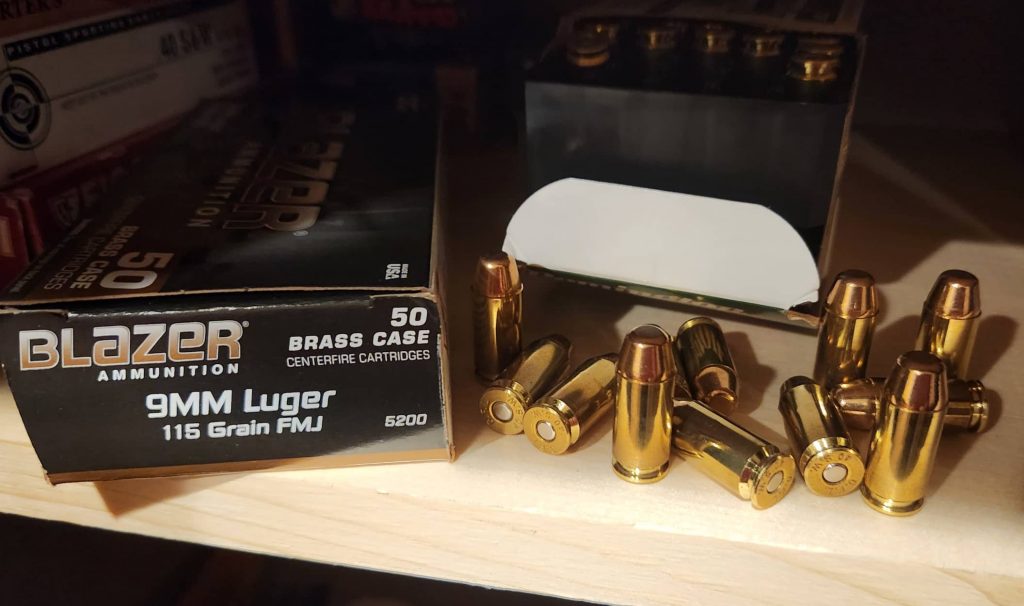
Carrying a Glock When Hunting: What You Need to Know
If you’re looking to go out on a hunting trip, you should always consider getting a sidearm to protect yourself. Carrying a Glock when hunting is one of the best options you can buy on the market.
The reliability and ease of use that Glocks are known for make it a perfect option when your life’s on the line, especially if you’re being attacked by wildlife with nobody around to help.
A sidearm is one of the most crucial pieces of hunting equipment you can invest in. It can save your life. Let’s look at everything you need to know about taking a Glock pistol on your next hunting trip.
Why You Need a Sidearm While Hunting
While many people love hunting for sport or as a bonding activity, there are many dangers to be wary of when going out into the wild, especially if the area you’re hunting in is known for having large predators.
In many Midwestern states, there are mountain lions, bears, and other predators that you could stumble upon and get attacked by if you’re not paying attention.
Whether you’re using a hunting rifle or a crossbow, you may find yourself needing another firearm to defend yourself if and when a predator attacks.
This is where using a sidearm like a Glock 19 or Glock 26 comes in. You can easily pull it out and fire a few quick shots to neutralize any threat you come up against.

What to Look for in a Good Glock Sidearm for Hunting
There are multiple variants and models of Glock pistols you can choose from. However, not all are the best option for use as a hunting sidearm.
The primary considerations you should think about before buying one are the sights, caliber, size, ammo capacity, and how it fits in the holster you’re using.
Most Glocks are highly reliable and easy to use, so whichever option you choose, you can rest assured that it won’t fail when you need it most.
Sights and Optics
Choose a Glock model based on your preference when using either the built-in iron sights or installing your own reflex sight. Some models don’t support or aren’t ideal for mounting optics.
This is because of the slide length and how it affects the balance of your pistol. Some concealed carry models are too short to accommodate a light reflex or red dot sight.
If you plan on using iron sights, you should check the model out in-store to see how your eyes align with the target. According to Shooting Mystery, getting a good sight picture and sight alignment is crucial for accuracy.
Caliber and Stopping Power
Glocks come in many models and sizes, each variant providing different options and calibers to meet your needs. For example, the venerable Glock 17 uses the ever-reliable 9mm Parabellum round.
I’d advise you to avoid any smaller caliber Glocks like the Glock 44 because those rounds may not have enough stopping power to save you from a large bear.
Choose a Glock that accepts 10mm Auto or .45 ACP caliber ammo, like the Glock 20 or the Glock 41, respectively. These can better protect you from large predators because of the stopping power they offer.
Size and Weight
The size and weight of any gun are important considerations to make when picking a model. This is even more crucial when you’re carrying it around for hours when hunting.
If you choose a Glock model with a longer slide and barrel length like the Glock 34, you will have extended range, the ability to mount optics, and maybe even an under-mounted flashlight or laser.
However, it will increase the pistol’s overall weight and make it harder to draw quickly. It’s also going to be more challenging to shoot one-handed in a pinch if your other hand is occupied due to the weight.
On the other hand, while shorter-barreled Glocks may not have the range, they’ll be a lot lighter and easier to draw when you’re in a high-pressure situation.
Ammo Capacity
The worst thing that can happen when defending yourself in high-stress situations is running out of ammo on your backup weapon.
That’s why you should consider how much ammo the magazine can carry. While it may be tempting to carry a smaller magazine for the weight, you risk running out of ammo at a crucial moment.
Another option you have is to buy extended 30-round magazines, which are widely available for many Glock models. Just make sure to read reviews and verify the reliability of certain magazines.

Holster Fit
One of the most overlooked factors when buying any sidearm is how it fits in your holster. You’ll either be using it with an existing holster or buying one specifically for that Glock model.
While many Glocks will fit just fine in most holsters, you should test it out with your own holster to ensure it’s snug and secure while remaining easy to draw.
You’ll want to avoid getting into a situation where either your Glock will fall out without you noticing or will be nearly impossible to grab from the holster when needed due to the retention mechanism.
Frequently Asked Questions (FAQ)
After learning more about Glocks and what to look for when choosing them, you might still have some questions related to them.
What Glock Model Is the Easiest to Shoot?
The easiest Glock to shoot is the Glock 17 because of its full-size frame and use of the moderately powerful but controllable 9mm Parabellum round.
What Glock Is the Most Powerful?
The most powerful Glock is definitely the Glock 20 because of its use of 10mm Auto rounds. This hefty caliber is highly recommended for taking down large predators thanks to its stopping power.
Will a Glock Ever Jam?
Like any other gun, a Glock can jam when exposed to dirt, dust, or even manufacturing defects. However, Glocks are usually more reliable and easy to maintain than other brands.
Final Thoughts
Whether you’re getting a long-barreled Glock or one that’s a lot smaller and easy to carry, take the earlier-mentioned considerations into account before buying one.
You don’t want to skimp on essential features of a proper backup sidearm because it can mean the difference between life and death.
Carrying a Glock when hunting should be your first choice when hunting in areas where a sidearm is required for protection. Whichever model you choose, you can rest assured that Glocks are some of the most reliable and easy-to-use handguns that get the job done as hunting sidearms.
Guest Post By Laura Jones
Laura Jones is an avid outdoors enthusiast and writer with a deep passion for hunting and survival. With a balanced level of experience in the field, she brings a unique perspective to her work, catering to both seasoned hunters and those new to the outdoor lifestyle. Through the website, ShootingMystery.com, Laura is able to share her knowledge, insights, and practical tips on hunting, survival skills, and embracing the challenges of the great outdoors.

